By 11:00, Gopamma Nayaka knew something was wrong. Her husband, Hanumantha, should have returned from collecting firewood an hour before.
Gopamma sent for her son, who gathered a search party and headed to Bandipur Tiger Reserve, a nearby national park in south-western India. Just a few metres inside the forest, the group discovered Hanumantha’s half-eaten remains. The tiger that killed him was still sitting next to the body.

In the wake of her husband’s death, Gopamma struggled not only with grief but economic hardship. Her son had to drop out of university and move back home to support her. “My life was much better when my husband was alive,” she says. “My older son could have studied, but now both of my sons have to work. I feel insecure and dependent.”
Despite all this, Gopamma feels no resentment toward the tiger that killed her husband. Like many Hindus in India, she views humans as one piece of a complex web of life composed of all creatures, each with an equal right to existence. Nor is she worried that India’s tiger population is on the rise. Her husband’s death, she says, has nothing to do with the fact that the government is trying to save tigers: “This was my fate.”
Rural Indians are unique in the world for their high tolerance for co-existing with potentially deadly wildlife. “You don’t find this in other cultures,” says Ullas Karanth, a recently retired carnivore biologist at the Wildlife Conservation Society and a leading expert on tigers. “If this kind of thing happened in Montana or Brazil, they’d wipe out everything the next day.”
The live-and-let-live outlook has also been foundational for India’s transformation into the world’s greatest stronghold for tigers. The country holds just 25% of total tiger habitat, but accounts for70% of all remaining wild tigers, or around 3,000 animals today.
Success does not come without cost, however. India’s protected areas have not expanded at the same rate as its tiger population, forcing some big cats to turn to human-dominated landscapes for survival. Livestock are killed and sometimes so are people.
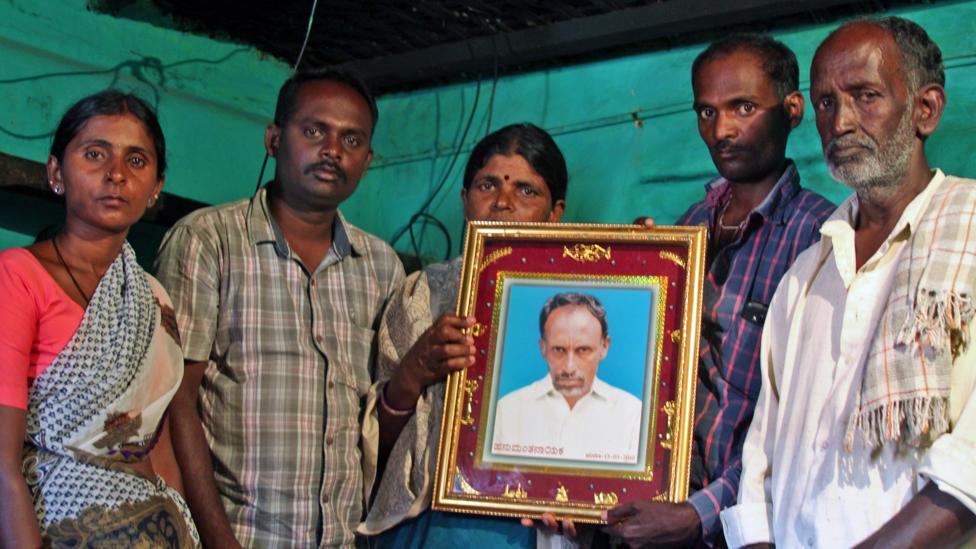
Attacks are relatively rare, with around 40 to 50 people annually killed by tigers – compared to around 350 people killed each year by elephants. But while getting killed by an elephant is typically viewed as something that just “happens”, like a car accident, deaths caused by tigers tap into a primordial fear that, if left unresolved, can drive communities to extremes. In many places, traditional tolerance is beginning to fray, leading to riots and targeted killing of tigers.
Not every tiger is a man-eater – not even close. No exact numbers for this behaviour exist, but Karanth guesses that only 10 to 15 of the animals become persistent predators of humans each year.
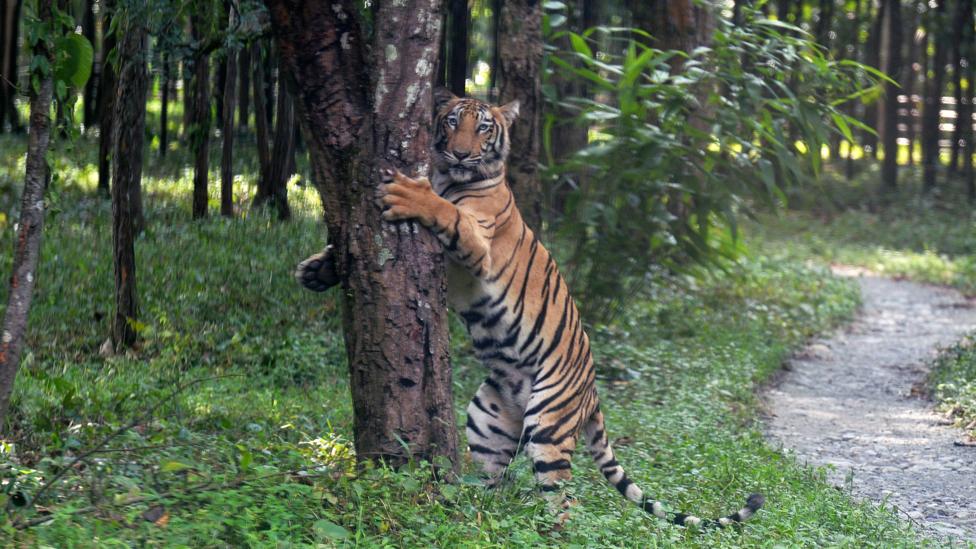
You can’t have everybody in the countryside turning against tigers because of one animal —Ullas Karanth
When this does happen, though, the most certain way to keep the peace, Karanth and other experts believe, is to quickly dispose of man-eating tigers before they kill again. “That’s the attitude necessary if you want to have a large number of tigers,” Karanth says. “You can’t have everybody in the countryside turning against tigers because of one animal.”
This is reflected in Indian law, which states that chief wildlife wardens and senior federal officials can issue an order to shoot if it is warranted in the interest of public safety. “If a tiger is really a man-eater, we have to go after this man-eating tiger according to a very well-defined standard operating procedure,” says Anup Kumar Nayak, additional director general of India’s National Tiger Conservation Authority.
But urban animal rights groups – which hold strong political clout in India – don’t see it that way. No matter how many people a tiger has allegedly killed, many activists argue that man-eaters should be trapped and put into captivity, translocated and re-released, or simply left alone. “I feel I am the voice for the voiceless animals,” says Jerryl Banait, a physician and leading wildlife activist based in Nagpur. “You cannot inflict atrocities and injustices on animals just because they cannot express themselves.”
But none of the non-lethal measures Banait and others call for are viable ways of dealing with tigers that stalk and kill humans, Karanth says. Tiger conflicts quickly metastasise into “political football”, he continues, and while the government waffles under competing pressures, man-eaters go on killing. Local people often eventually enact their own solution, poaching not just the tiger in question, but targetingall the tigers in their area. They begin to view India’s forest department as the enemy – and conservation as something opposed to their best interests.
Under this scenario, at best, tiger numbers will stagnate. At worst, widespread revenge killings will cause the species to all but disappear.
For India to continue to shine as a tiger success story, Karanth says, it needs to come to terms with the fact that what’s best for a species does not always align with what’s best for an individual animal – especially an individual that has taken human lives. In other words, the future of the world’s tigers largely depends on convincing Indians to accept that man-eating predators must die in order for the species to thrive. “There’s no other way,” he says.
Price of success
No one knows how many tigers once roamed India’s diverse landscapes, but the cats certainly numbered in the tens, if not hundreds, of thousands. Their decline began centuries ago, with the arrival of shotguns and steel traps. Tigers were targeted for sport by the rich and for bounties by the poor, with one historian tallying over 80,000 of the big cats killed from 1875 to 1925. Hunting also wiped out tigers’ prey, causing the species to be doubly impacted.

By the mid-20th Century, India had lost its Asiatic cheetah and nearly all its Asiatic lions to overhunting. Its tigers would have likely disappeared as well were it not for Prime Minister Indira Gandhi, who outlawed all hunting in 1971. Sometimes referred to as “India’s greatest wildlife saviour”, Gandhi strengthened wildlife legislation, set up protected areas and created a tiger task force.
“This was happening around the time of Rachel Carson and similar environmental movements in Europe – and the same wave came to India,” says Krithi Karanth, chief conservation scientist at theCentre for Wildlife Studies,a non-profit organisation in Bangalore, and Ullas Karanth’s daughter. “People started waking up to the fact that nature’s in trouble and that we can’t continue business as usual.”

Tigers disappeared from 67% of India over a 100-year period
But tigers didn’t immediately rebound. In the 1980s, when Ullas Karanth, now 70, made the switch from a career in engineering to one in conservation, roughly 2,500 tigers still roamed the landscape. Ullas, who has always had a fondness for large predators, decided to focus his career on recovering his country’s tiger population. Figuring out how many tigers India had left was a first step. In 1991, he developed a novel, accurate counting method by using camera traps to identify individual tigers’ unique stripe patterns. He was puzzled, however, when he found that tiger densities varied wildly, from fewer than one to up to 15 tigers per 100 square kilometers.
Ullas suspected that low prey densities due to bushmeat poaching could be behind this – and his hunch proved correct. He eventually confirmed thata single tiger kills around 50 prey animals each year, meaning it needs a population of at least 500 prey animals to sustain it. Based on an extensive review of old hunting journals, taxidermy notes and land tenure records, Krithi later estimated that tigers disappeared from 67% of India over a 100-year period, and that many of their prey species, including deer and gaur (the world’s largest bovid), likewise declined. “The only species that doesn’t seem to be in trouble are wild pigs,” Krithi says. India’s tiger populations, in other words, are held back by the fact that there’s not enough to eat.
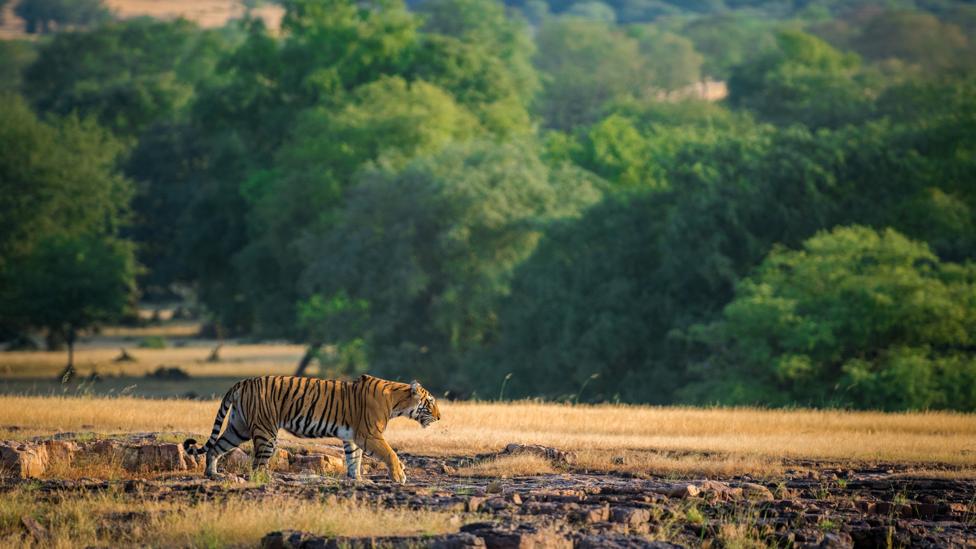
Starting in the 1990s, Ullas began pushing for science-based tiger management with a special emphasis on conservation of prey species. He collaborated with others to facilitate the voluntary, government-funded relocation of villages situated within protected areas. When tiger poaching began to surge as a result of growing Chinese demand for the predators’ parts, Ullas’s counting method revealed the severity of the problem, and he worked with officials to develop effective anti-poaching programs.
As a result of these and other efforts, tiger populations began to grow. The greater Malenad landscape in southwestern India, for example – which includes Bandipur Tiger Reserve, where Gopamma’s husband was killed – is now home to 400 tigers, more than four times as many as when Ullas began working there 25 years ago.
As the predator’s numbers climb, however, conflicts become inevitable. Competition and territoriality force certain tigers to leave protected areas, especially youngsters seeking to establish their own territories and injured or old animals desperate for food. Most tigers in this situation prey on livestock, but a few wind up killing people as well.
“Tigers are normally terrified of humans,” Ullas says. “But when they discover the vulnerability of people, they suddenly lose that fear and realize these big, tailless monkeys are so easy to catch.”
Killing endangered species sounds counterintuitive, but in the case of habitual man-eaters, Ullas and others believe it is the only option for ensuring conservation of tigers as a species. Like pruning a tree with dead branches, the loss of a few problematic individuals has no negative impact on the whole, they say. Healthy tiger populations experience annual mortalities of 15-20% anyway, and with reproduction rates similar to house cats, deaths are quickly replaced by new births. Because man-eaters are relatively rare, under this system, only a couple dozen or so tigers would need to be put down each year.
Some animal activists argue, however, that there are too few tigers left in the wild to justify even one being killed. Others present their case from a moral standpoint. As one Twitter user in India wrote following the death of a man-eating tiger last year: “Congratulations people, another tiger murdered, another species closer to extinction.” Another lamented: “We live in a society where poor animals are killed instead of showing mercy by capturing them.”

Banait believes that tigers definitively proven to be man-eaters – and with all other options for saving them exhausted – should be killed. “Being a doctor, my first responsibility is to protect human beings,” he says. But he sets the bar high for definitively assigning the label of man-eater, such as comparative DNA analyses attributing multiple kills to a particular animal (a single kill, or sporadic kills, he says, could be the result of accidental, chance encounters, not intentional predation). Ullas points out, though, that gathering DNA evidence requires a level of skill that often does not exist in the countryside, and that other forensic and ecological evidence can suffice for pinning kills to a particular tiger. Ultimately, Ullas says, public safety must come first: “This is not some OJ Simpson trial, where the tiger must be assumed to be innocent until proven guilty.”
If the government does not provide a timely solution, however, local people will devise their own. They may poison all tigers in their area, or they may trap the cats and beat them to death.According to Jose Louies, chief of the wildlife crime control division at the Wildlife Trust of India, professional poachers also take advantage of such situations. Tiger bones, claws, teeth, penises and fur destined for China fetch high prices on the black market, so poachers are happy to take care of problem animals for rural Indians.
“Those who lose cattle to tigers, they’ll definitely employ poachers,” Louies says. “Poachers may also pay money to people to keep silent and allow them to take care of the problem and make a profit.”
In the worst cases, tiger incidents become release valves for years of economic and social frustrations. Communities turn against conservation efforts and violent mobs form, sometimes incited by timber poachers or other wildlife criminals who hope to weaken the forest department. “I fear mobs more than tigers,” says AT Poovaihah, a deputy conservator of forests who once ended up in hospital after an encounter with a mob. “It’s all men, some of whom are drunk, and all of whom are angry. They know we’re doing something to capture the animal, but even then, they still want to charge us.”
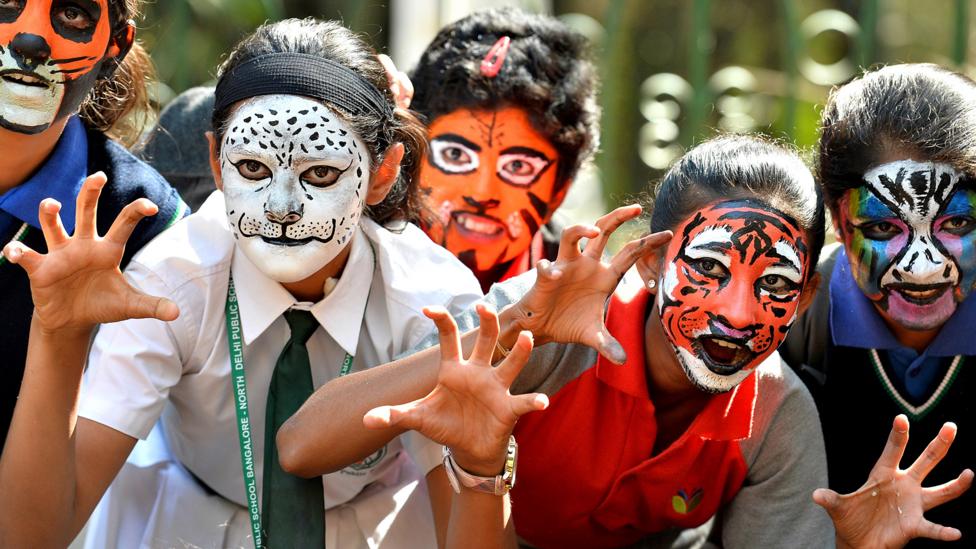
In 2013, for example, Shivamallappa Basappa, a farmer in south-western India, was killed and partially eaten by a tiger while grazing his cows on the edge of Bandipur Tiger Reserve Karnataka State. He was the third tiger victim in the span of just two weeks, and many people had reached their breaking point. A mob of some 200 men quickly formed. By the time reinforcements arrived at 01:00, the crowd had burned down the local forest department’s headquarters and set fire to a government jeep.
“We have lived in this place for 60 years, and ever since the beginning, we’ve never had a moment of peace from these wild animals,” says Shanthamurthy Devappa, a relative of Basappa’s, who says he did not take part in the violence himself. “We’ve continually been harassed and bothered by wildlife, and we got angry for that reason. It was the accumulated anger of many years.”
#JusticeForAvni
Perhaps no case better epitomises the problems surrounding man-eaters than the story of T-1, a headline-making tigress shot in November 2018 after a two-year killing spree. By the time T1’s dramatic story finally ended, at least 13 people had lost their lives and thousands of others had been terrorised.

In 2015, T-1 began turning up on camera traps in Pandarkhawa in Maharashtra State, a gently undulating landscape of pastures, agricultural fields and forest patches in central India. She preyed on livestock, and soon made her first human kill, a 60-year-old woman found dead in her field with deep slashes in her back. Three months later, T-1 killed a man – and then another the very next day.
Fearing blowback in India’s cities, the region’s chief wildlife warden issued an order to capture T-1, but not to kill her. India is home to a growing, powerful animal rights movement, “an extreme version of Western animal welfarism superimposed on the Hindu ethos”, as Ullas characterises it. The movement emerged in the 1990s amidst increasing wealth in urban areas, when “300 million people suddenly had more time to think of things other than just making a living”, Ullas says.
Banait – whose love of wildlife was instilled during childhood visits to the countryside with his physician parents – classifies the movement differently: “We are trying our level best to try and put our voices forward to the government so they listen to us. They should provide animals with more safety and with more dignity.”
Even if authorities do manage to capture a man-eating tiger alive, they then face the question of what to do with it. Relocating it to a different forest only moves the problem. In 2014, for example, officials and amateur naturalists captured a young man-eater near Bhadra Tiger Reserve and released him – against Ullas’s advice – in a forest some 280km (174 miles) away. Three weeks later, following a streak of livestock attacks, the tiger killed a pregnant woman.
As for keeping captured tigers in captivity, India’s zoos are full and other facilities are lacking – and all promise a dismal existence for a once-wild predator. “Any person who knows wildlife and these creatures knows it’s such a sad thing to see them in captivity,” says Poonam H. Dhanwatey, co-founder of the Tiger Research and Conservation Trust, a non-profit organisation in Maharashtra. “What’s the quality of life you’re giving them, and is it fair to put them in small cages once you remove them from freedom?”
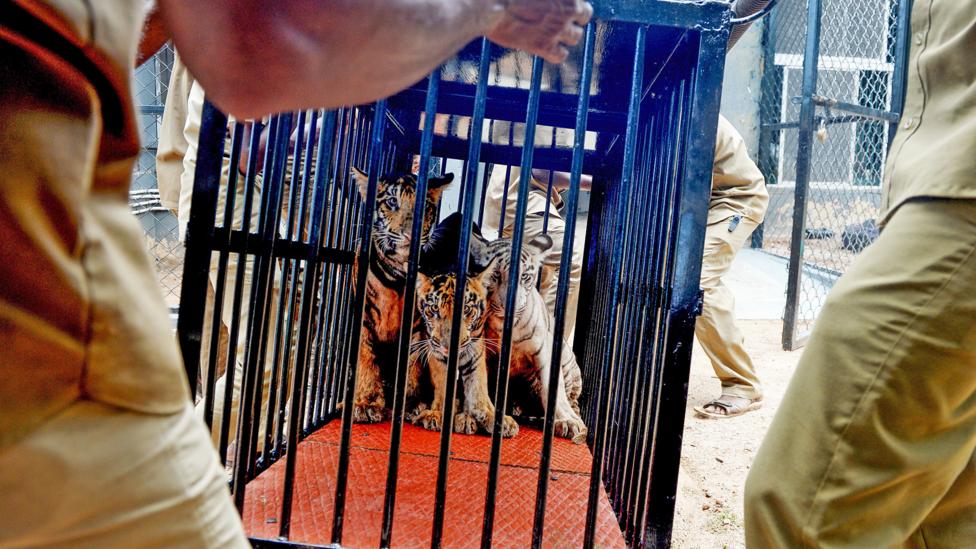
T-1, however, seemed especially savvy at avoiding capture. She ignored baited traps and evaded search parties deployed into the forest to catch her. After she made her seventh kill – a 20-year-old man – communities’ trust in the government was broken, their patience exhausted. People barred officials from entering their villages or even examining victims’ bodies, and a mob beat up several forest guards.
Violence would have likely escalated from there were it not for the efforts of Abharna Maheshwaram, a deputy conservator of forests in the Maharashtra Forest Department. She had a hunch that female officers would be better at keeping the peace than male ones, so she sent 18 of her female colleagues to affected villages wearing civilian clothes. They only revealed their identity as forest guards after earning the trust of the local women. The strategy worked: communities’ faith in the forest department was restored and they once again began cooperating with officials.
“One thing I learned from T-1 is that whenever there is a human-animal conflict, it is not only about the animal, it’s also all about the community with whom you’re working,” Abharna says. “I personally believe that involving communities is the solution for conservation in the country.”
Gains on the local level were hampered, however, by the ongoing legal, political and social battle that was waging across India’s cities over T-1’s fate. In February 2018 – with nine victims now attributed to the man-eating tiger – the Bombay High Court stayed an order to shoot T-1. Efforts to capture her, including through use of thermal drones, hunting dogs and a paraglider, became increasingly desperate. T-1, meanwhile, became a mother, and her two cubs began joining her on human hunts.
In August, T-1 claimed three human lives in the span of just 24 days. When the government issued a new order to capture her and her cubs and, failing that, to shoot her, Banait sought an intervention through India’s Supreme Court. “When you’re giving capital punishment – shoot-on-sight for an animal – there needs to be proper legal justification for these actions,” Banait says.
T-1, who killed at least 13 people and was killed in November 2018, is brought into a post-mortem room at the Gorewada Rescue Centre (Credit: Getty Images)The ongoing chaos, Ullas says, also contributed to the government’s decision to permit Shafath Ali Khan, a private freelance hunter, to take part in T-1’s capture. Khan’s son, Asghar Ali Khan, who was not permitted to join the hunt, also came along. The Khans are among a dozen wealthy, self-described maharaja who have made careers out of offering sharp-shooting services for high-profile problem animals, Ullas says, but their widely publicised involvement in governmental hunts fuels the flames of outrage among animal welfare advocates and undermines local officials’ authority. “We have 80,000 forest guards, quite a few of whom are excellent marksmen,” he says. “There is absolutely no need for these glory-seeking guys.”
On November 2, Khan’s son, Asghar, was finishing dinner when he received a call reporting a tiger sighting on a nearby road. Without informing his father’s government counterparts, he and several colleagues grabbed their guns and headed out. From their vehicle they soon spotted T-1, identifiable by a tell-tale “trident” marking on her side. According to Asghar’s widely reported account, one of his colleagues shot the tiger with a tranquiliser dart, causing the enraged cat to charge. Asghar – allegedly in self-defence, but sitting within his vehicle – fired on T-1 with a rifle. She died almost instantly.
“The hunter always wanted to kill her, and he disrupted the entire operations,” Banait says. “The process in which they killed Avni was very out of the box, with many irregularities and violations of the law.”
T-1’s death sparked very different reactions. In Maharashtra, villagers celebrated with firecrackers; in cities, protestors held candlelight vigils. Maneka Gandhi, a politician, animal rights activist and widow of Indira Gandhi’s son, tweeted to her 200,000 followers that Avni had been “brutally murdered” and that her killing was “patently illegal”. She tagged her posts with the widely trending #JusticeForAvni (Gandhi declined an interview request for this story).
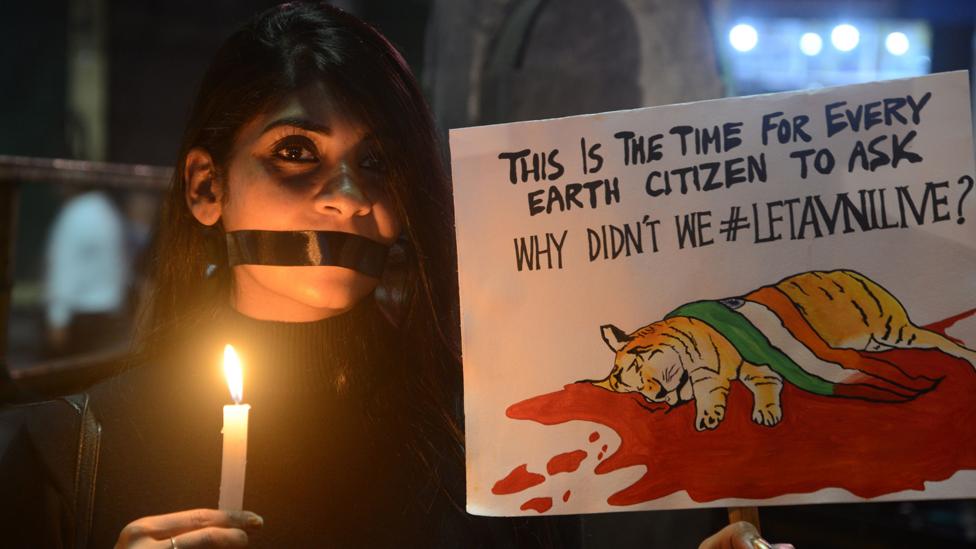
Advocates soon began accusing the Khans of tampering with evidence and questioned whether T-1 had in fact charged the car – an aberrant behavior for a tiger, which usually reacts to a dart as it would something as minor a bee sting. Forensic analysis of the tiger’s wounds later confirmed that she had been shot from the side, likely while crossing the road and certainly not while charging. The tranquilising dart recovered from her thigh also appeared to have been put in place after she was killed. Ultimately, no-one was punished.
T-1’s story made headlines around the world, but as Ullas points out, India has had many tiger cases that are “similarly absurd, similarly comic and similarly tragic”. The entire fiasco and many of the lives it cost could have been avoided, he says, if the government had simply given the order to shoot to begin with.
From 3,000 to 15,000
Eliminating man-eaters is the most important factor for retaining social tolerance for tigers, but it’s not the only requirement. India also needs to ensure families are quickly compensated for their losses. The government mandates that tiger victims’ relatives receive 500,000 rupees (around $7,200/£5,580) and that livestock killed by predators are reimbursed as well. But this doesn’t always happen.
After Gopamma’s husband was killed, she says, the junior official she approached for help assured her she would receive compensation. “I was naive to have believed him,” she says. A higher-up official soon countered that since her husband had been trespassing in the forest when he was killed, she would not be receiving any compensatory funds after all. With no other option, she took out a loan with an exorbitant 60% annual interest rate. “I had hoped some compensation would come, but because I’m poor, I accepted my fate,” she says. “I felt totally powerless.”

Livestock predation by tigers can also be devastating for a family making just $700 (£542) or so a year, and these impacts are much more common than human deaths. Yet in a survey of 1,370 villages in the Western Ghats, Krithi Karanth found that only 31% of people who were entitled to compensation for losses due to human-wildlife conflict were actually getting it. In interviews, she learned that people struggled with confusing paperwork and that they lacked the time or means to make multiple visits the local government office to apply. Some were also deliberately denied or asked to give bribes. “There were problems with corruption in the system and with people getting the bureaucratic run-around,” Krithi says.
In 2015, Krithi and her colleagues at the Centre for Wildlife Studies launched Wild Seve, a service that acts as a go-between for people impacted by animals and the government. People call WildSeve’s toll free number to report an incident. An inspector soon arrives to document the case using an open-source mobile data kit and takes care of the paperwork. Wild Seve now serves half a million people in 600 villages and has filed more than 14,000 cases on their behalf. Processing time for a given claim previously averaged 277 days, but claims are now paid out within 60 days.
Wild Seve delivers a host of other services as well, from providing individuals who suffer repeat livestock losses with materials to build tiger-proof sheds, to launching a wildlife education program that reached 3,000 children last year. “I’m a huge optimist,” Krithi says. “Practical interventions will go a long way to build support for wildlife.”
But Krithi’s programme, while quickly growing, is for now still confined to a small section of Karnataka. In other parts of the state and country, human-wildlife conflict continues to breed dissatisfaction. People are becoming resistant to the idea of more tigers. Krithi and her father believe there is still time to stop the social tides from changing, however, and to restore tigers to even greater heights – if only India decides to truly make the species a priority.
Based on the results of government surveys, Ullas calculates that tigers occupy just 10 to 15% of India’s 300,000 square kilometres of currently available potential habitat, and over the past 20 years, their numbers have plateaued at about 3,000 individuals. This population trajectory runs contrary to a July press release, in which India’s government claimed that the country’s tiger population has increased by 6% annually since 2006. “In spite of the challenges India faces as a developing country, we have done a wonderful job,” says Nayak at the National Tiger Conservation Authority. “It’s been a steady increase since 2006.”
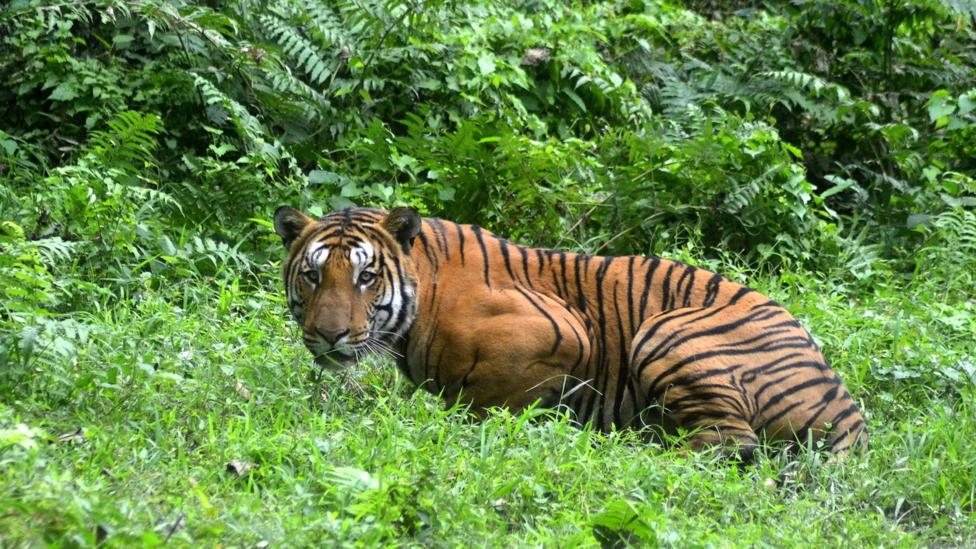
Ullas, however, calls the methodology behind the findings “deeply flawed”, and adds that the government has prevented any outside scientific review of its data and analyses for the past 15 years. A paper published in November 2019 in Conservation Science and Practice also concludes that India’s tiger monitoring program is “unreliable”, suffers from “a lack of transparency” and that its results are “not backed by reliable scientific evidence”.
Nayak counters that the methods are sound, and that “a lot of people have been engaged in this process”, including three outside experts from the US, UK and Australia “who have already examined all the aspects and said that yes, we’ve been doing a wonderful job”.
James Nichols, an emeritus scientist at the United States Geological Survey who specialises in animal population dynamics and management, and who collaborated with Ullas for 25 years to develop tiger sampling methods, agrees that the raw data and methodological details that the government used to arrive at its findings “should be published somewhere to permit scrutiny by methodological experts”.
So while “India has done far more and far better with tigers than any other country”, Ullas says, he believes the picture on the ground is less rosy than politicians would lead the public to believe. “We’ve yet to achieve our full potential.”
India, he continues, is at a cross-road. It can resign itself to a small, limited number of big cats, or it can become one of the world’s most stunning conservation success stories by allowing its tiger population to grow to 10,000 or even 15,000 animals. The country has the money needed to realise this dream, and as ever more people choose to move from the countryside into cities, it also has the space.
For now, however, this is not a governmental goal. “I think the [tiger] numbers can increase, but to what extent is very difficult to say at this time,” Nayak says. “We have 2,900 tigers – and increasing – but we still have a lot of difficulties with tigers straying into human-dominated landscapes in certain parts of India and creating a lot of problems.”
India is one of the world’s most biologically diverse nations, but it sets aside less than 5% of its land for wildlife – compared to the 15% set aside by the US and China. Prakash Javadekar, India’s minister of environment, forest and climate change, did not respond to interview requests for this story.
Ullas questions whether the government has the political will to step up its conservation commitments. But while discouraging, he points to India’s past as proof that things can quickly and unexpectedly change for the good.
“I could have never predicted in the 1970s, when I saw the last tigers shot and paraded, that India would once again have wild tigers,” he says. “These things come in stages. Suddenly something will change, and when it does, we have so many things going in our favour.”
This article was first published by BBC Future on 21 November 2019.
What you can do
Support ‘Fighting for Wildlife’ by donating as little as $1 – It only takes a minute. Thank you.

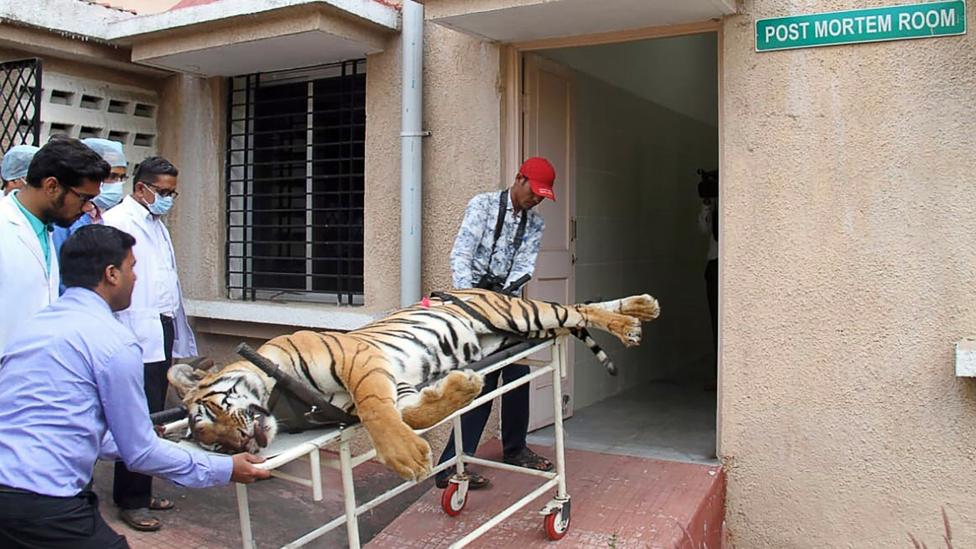






Leave a Reply